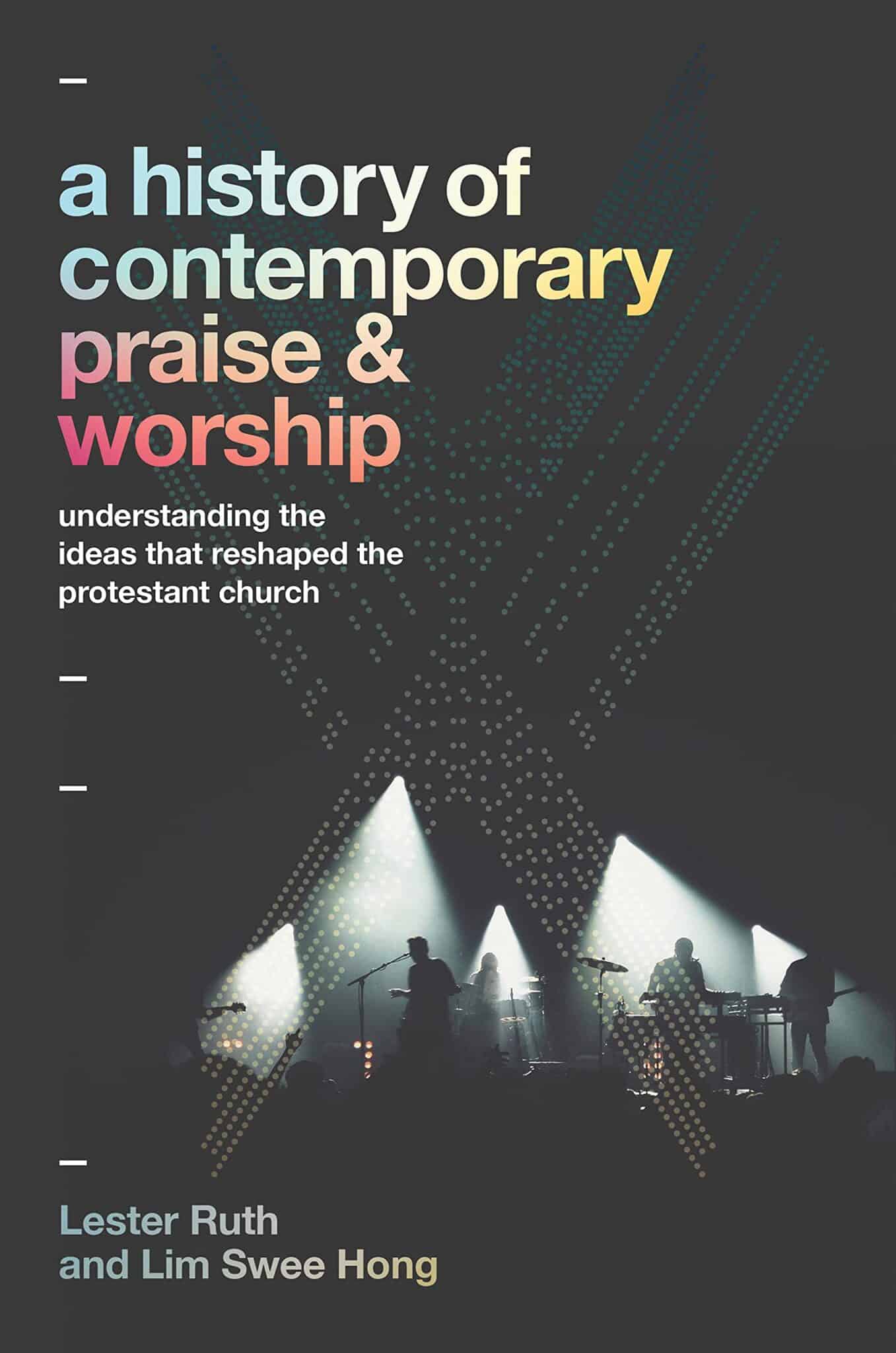Lester Ruth and Lim Swee Hong. A History of Contemporary Praise & Worship: Understanding the Ideas That Reshaped the Protestant Church. Grand Rapids: Baker Academic, 2021. 350 pp. $44.99.
Lester Ruth (PhD, University of Notre Dame) is Research Professor of Christian Worship at Duke Divinity School in Durham, NC, and Lim Swee Hong (PhD, Drew University) is Deer Park Associate Professor of Sacred Music at Emmanuel College of Victoria University in the University of Toronto in Toronto, Ontario. This joint venture by Ruth and Lim combines their expertise to live up to all that its title promises, A History of Contemporary Praise & Worship: Understanding the Ideas That Reshaped the Protestant Church. Their history explores the ideas (theologies), people, and practices that lie behind what most of North America’s Protestant churches call worship today. One could almost make a primer on the subject from their footnotes alone as they include a trove of references to articles, books, conference notes, cassette tapes, VHS recordings, personal interviews, and more. Ruth and Lim clearly did their homework. Above the footnotes, Ruth and Lim recount how two rivers of history merged into one (their metaphor) to make for what they have termed Contemporary Praise & Worship. Part 1 of the book tells the history of Praise & Worship in four chapters, and Part 2 uses three chapters to tell the history behind contemporary music.
Giving a caricature of each history, the first had a theology of obeying the command to praise God (Heb 13:15) in order for him to come down and inhabit their praises (Ps 22:3b), just as God once inhabited the tabernacles of Moses and David. This theology began in seed form with Reg Layzell in Abbotsford, British Columbia, Canada, and through his influence upon the Latter Rain movement that began in 1948, his theology would eventually spread through a growing network of people, publications, and conferences. Though continuationist from the outset (expecting sign-gifts to occur once God’s presence finally came down to inhabit the praises of His people—something that the people or at least “priestly” worship leaders were to sense somehow), this theology leaned heavily on Scripture. David was the prototypical worshiper, and congregations expected expressions of worship in his psalms and others to be seen in the church today.
For the second history (contemporary worship), Ruth and Lim begin with an interesting overview of North American expressions of pragmatism before 1965. Camp meetings, the “new measures” of Charles Finney, and the Salvation Army’s use of novelty in America—these “subterranean stirrings” and methods like them eventually saw a river of pragmatism take their place. The theology for this pragmatism is represented by 1 Corinthians 9:22. From this verse, if the overarching purpose of the church was to reach all men with the gospel, then it should adapt and use novel means to reach them all. Success would be seen in the numbers. As marketing and advertising developed, so also did the church marketing movement, and 1 Corinthians 9:22 became the justification for not the individual but the church as a whole to evangelize all men, specifically through its worship services. In becoming “all things to all men,” churches were to figure out all the things that all contemporary men were and tailor their worship services accordingly in order to rejuvenate their declining numbers. Successful parachurch ministries that targeted youth were the gateway to using novel forms of worship in the churches, and this novelty included dramas, movie clips, rock music, and more.
The authors point out how both histories developed side-by-side, sometimes overlapped, and eventually merged in the mid-1990s. The “infrastructure” eventually became one for both movements—technology, shared music through Christian Copyright Licensing International (CCLI), and formal programs at institutions to train “worship leaders.” The field between the rivers disappeared as they grew and became one. The book ends with a helpful three-page appendix that summarizes the two movements according to their time periods in parallel columns.
This book is not an easy-chair read for someone looking for an introduction on worship in North American Protestant churches. It is, however, an excellent resource for anyone looking for an in-depth history of the beliefs, key figures, operations, and practices behind the worship of most North American churches today. Whether teaching undergraduate or graduate students, professors would benefit their students by assigning this book as required reading. Pastors unfamiliar with the history behind today’s mainstream worship would do well to read this book as well. Cessationist pastors who hold to the regulative principle will find their convictions strengthened by examining the outcome of a Pentecostal or pragmatic theology of worship.
Having given this book a recommendation, a couple of caveats are in order. First, as objective as Ruth and Lim hope to be (xiv), their rivers of history become rather broad at points. Egalitarianism, continuationism, ecumenicism, and liberalism fill the waters at points and will leave a conservative reader wondering what similarities he has with some of the fish that they describe.
That being said, second, the hermeneutics of Praise & Worship are suspect at best. To claim that two verses (Heb 13:15 with Ps 22:3b) together give the formula whereby God will inhabit (spatially?) a congregation’s praises denies God’s omnipresence and the Christian’s ability to worship God in spirit and truth (cf. John 4:24). By making the church into a spiritualized tabernacle of Moses or David and introducing worship leaders as “priestly” mediators who help bring down the presence of God, this theology borders on taking Christians back into the Law and diminishes the glory of the one High Priest who gladly welcomes all who draw near to Him by faith. Finally, as Ruth and Lim occasionally admit, it is debatable that the pragmatism of contemporary worship was truly theologically driven. More likely, its pragmatism drove its theology. One verse (1 Cor 9:22) excused all sorts of novelty, and, when joined to the church marketing movement, ironically became the means of targeting select groups within American society instead of trying to reach every tribe and language and people and nation.
Whatever their prior theological commitments may be, readers will find Ruth and Lim to be excellent guides through the historical rivers of Contemporary Praise & Worship.
David Huffstutler
First Baptist Church, Rockford, IL





